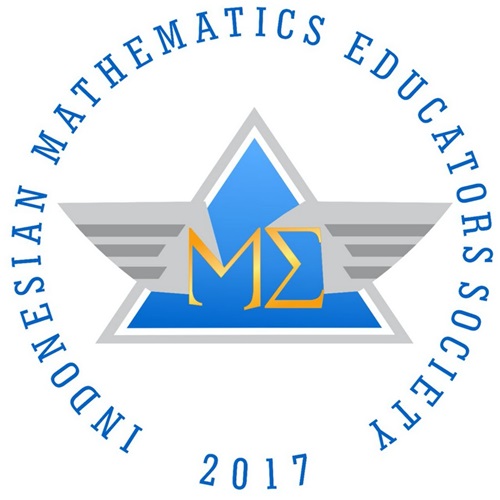The Effect Of Self Regulated Learning Model And Discovery Learning Model On Thinking Ability Creative Mathematics
DOI:
https://doi.org/10.22437/edumatica.v11i03.14599Keywords:
creative thinking, discovery learning, self confidence, self regulated learningAbstract
This study aims to determine the effect of self-regulated learning (SRL) and discovery learning models on students' mathematical creative thinking abilities, the influence of self-confidence on the ability to think creatively mathematically, and the interaction between the SRL learning model and discovery learning with students' confidence in creative thinking skills. The research method used is a quasi-experimental method. The research sample consisted of 32 people in the experimental class I, 32 people in the experimental class II, and 32 people in the control class. Data collection is done by giving a questionnaire and written test questions. The data analysis used is a two-way ANOVA technique. The results showed the SRL model was more effective in influencing creative thinking skills than the discovery learning model and the conventional model. High and moderate self-confidence of students is more effective in influencing creative thinking skills than low self-confidence. There is an interaction between the SRL and DL models with self-confidence in influencing creative thinking skills.
Downloads
References
Arends, R. I. (2012). Learning to Teach ninth edition. NewYork: McGraw-Hill.
Astari, D. P. A., Sedanayasa, G., & Margunayasa, I. G. (2016). Pengaruh Model Pembelajaran Self Regulated Learning (SRL) Berbantuan Media Audio terhadap Motivasi Belajar Matematika Siswa. E-Journal PGSD Universitas Pendidikan Ganesha, 4(1), 1-10.
Fatimah, E. (2010). Psikologi perkembangan peserta didik. Bandung: CV Pustaka Setia.
Heliawati, L., & Permana, I. (2019). Meningkatkan keterampilan berpikir kritis dan kreatif siswa melalui pembelajaran tata nama senyawa kimia dengan menggunakan media piringan kation anion. 3, 19-32.
Herawati, E., Somatanaya, A. A. G., & Hermanto, R. (2019). Hubungan Self-Confindence dan Kemampuan Berpikir Kreatif Matematik Peserta Didik yang diajar Menggunakan Model Elicting Activities (MEAs). Journal of Authentic Research on Mathematics Education (JARME), 1(1), 1-9. http://jurnal.unsil.ac.id/index.php/jarme/article/view/621
Irwan, Febryan Santyasa I Wayan., dan T. I. M. (2014). Pengembangan multimedia interaktif berbasis self-regulated learning dengan Model Addie untuk meningkatkan prestasi belajar seni budaya bagi siswa kelas VII SMP Negeri 3 Mendoyo. E-Journal Program Pasca Sarjana Universitas Pendidikan Ganesha, 4.
Jumalia. (2015). Pengaruh Kepercayaan Diri Dan Kemampuan Komunikasi Matematika Terhadap Hasil Belajar Matematika Siswa Kelas Viii Smp Negeri 5 Majene. Journal of Chemical Information and Modeling, 53(9), 1689-1699.
Kemdikbud. (2013). Permendikbud No. 64 Tahun 2013 tentang Standar Isi Pendidikan Dasar dan Menengah. Kemdikbud.
Lesmanawati, Yunita, D. (n.d.). Pengaruh Self Regulated Learning terhadap Kemampuan Berpikir Kreatif Matematis Siswa Sekolah Dasar. Educational Psychologist. https://doi.org/https://doi.org/10.31004/basicedu.v4i3.400
Munandar, U. (2012). Pengembangan Kreativitas Anak Berbakat. Jakarta: Rhineka cipta.
Roestiyah. (2012). Strategi belajar mengajar. Jakarta: Rineka Cipta.
Saironi, M., & Sukestiyarno, Y. L. (2017). Kemampuan Berpikir Kreatif Matematis Siswa dan Pembentukan Karakter Rasa ingin Tahu Siswa pada Pembelajaran Open Ended Berbasis Etnomatematika. Unnes Journal of Mathematics Education Research, 6(1), 76-88.
Soemarmo., H. dan. (2014). Penilaian Pembelajaran Matematika. Bandung: PT Refika Aditama.
Suparman. (2015). Peningkatan Kemampuan Berpikir Kreatif Siswa Melalui Penerapan Model Problem Based Learning. Bioedukasi Universitas Khairun, 3(2), 367-372.
Suwarjo dan Eva Imania Elisa. (2010). Permainan bimbingan dan konseling. Yogyakarta: Paramitra Publishing.
Suyitno, A., Suyitno, H., Rochmad, & D. (2017). "Use of open-ended problems as the basis for the mathematical creativity growth disclosure of student". Journal of Physics.
Virliani, V., & Sukmawati, R. (2019). Upaya Peningkatan Kemampuan Berpikir Kreatif Matematis Siswa Smp Dengan Model Treffinger. Prima: Jurnal Pendidikan Matematika, 3(1), 17. https://doi.org/10.31000/prima.v3i1.1127
Winiari, L. P., Santyasa, I. W., & Suswandi, I. (2019). Pengaruh Model Self Regulated Learning terhadap Kemampuan Berpikir Kritis dalam Pembelajaran Fisika Kelas XI MIA di SMA Negeri 1 Tembuku. Jpff, 9(1), 24-25. https://ejournal.undiksha.ac.id/index.php/JJPF/article/view/20646
Downloads
Published
How to Cite
Issue
Section
License
Copyright (c) 2021 Emi Andriyani, Muhaimin Muhaimin, Syaiful Syaiful

This work is licensed under a Creative Commons Attribution-NonCommercial-ShareAlike 4.0 International License.







